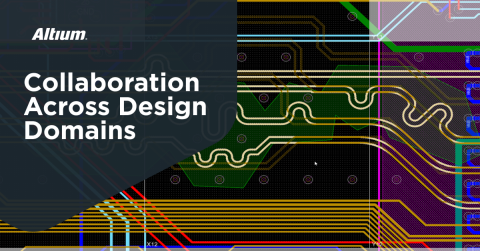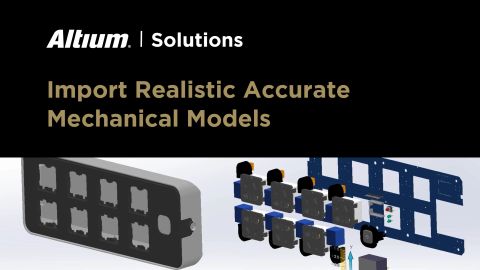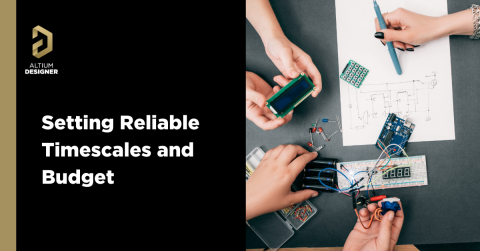The Best Design Collaboration Tools for Electronics Engineers

Modern electronics design is about a lot more than electronics, and design teams have to take a holistic approach to product development. Everything from the printed circuit board (PCB) to enclosure designs and firmware is interlinked and has to be addressed together. Then, there is the transition to manufacturing, which brings its own set of documentation and sourcing challenges. With so many people involved in different aspects of electronics design, electrical engineers need engineering collaboration tools that help them interact with all other aspects of a project, including manufacturing and mechanical design.
To help today’s electronics design collaboration teams work more effectively, we’ve compiled some of the essential software design tools and key features that teams need to collaborate. Users can get access to these essential collaboration tools for electrical engineers through the Altium 365 platform. Before you start shopping for a high-power version of Slack or upgrading your PLM system, take a look at the list of best engineering collaboration software.
Team Collaboration Tools for Engineers
You hear team collaboration, and you probably think of email and chat programs like Skype or Google Docs. If you’re part of a larger organization with multiple design teams and a long list of past projects, you’re probably using a hardware version control system to document project data and an ERP/PLM system to track inventories, sourcing data, and product lifecycles. Today, these design tools are all part of the cloud and can be accessed by multiple team members, but the challenge is getting these tools to work together and, most importantly, getting them to work smoothly with your PCB design software.
For PCB design teams, the premier collaboration platform is Altium 365. Every Altium Designer user can access this platform through the regular Altium Designer desktop application and use a complete set of built-in collaboration and data management tools.
Secure File Sharing
File sharing with user access control is a minimum requirement for electronics design collaboration tools. Design teams need access to data at the project level and in individual files; Altium 365 includes file-sharing features in its backend with a set of managed content folders, each designed to host specific file types used in Altium Designer. This makes it easy to store and share your design data in different file types using your web browser. You and your team members can also access files directly through Altium Designer using the Explorer feature.

File sharing starts with hosting your projects in the cloud rather than using a desktop application that sends around your design data just like an email. Hosting your data in Altium 365’s cloud platform lets you and your team access designs from anywhere, and you can share them with your manufacturer when you’re ready to start production.
Release to Manufacturing
Many designers still use emails or Dropbox to send out project files and outputs for review by a manufacturer. Altium Designer users can take advantage of file-sharing features and revision tracking simultaneously with the Project Releaser tool in Altium 365. Once a project revision is ready to release, your design and fabrication data can be packaged and made available in your Altium 365 workspace as a downloadable folder. Each prior release of project data will be accessible by collaborators and team members, or you can send a secure download link to your manufacturer so they can access your files. This is the fastest way to give all current and prior project revisions to your manufacturer through a secure platform so you can get through a design review and into production.

Version Control Key Features
Version control is one essential feature for individual designers and for teams that collaborate on complex design projects. Version control helps designers keep track of revisions throughout a project’s lifecycle, including changes to the project file structure and changes to individual files. Version control systems are imperative in larger organizations, where it’s possible for multiple designers to work on a project in parallel and possibly create conflicts in design data. The best hardware version control systems are based on Git and will integrate directly with your PCB design software so you can easily manage revisions to project data.

Altium 365’s version control system is based on Git and is accessed directly through Altium Designer or your Altium 365 Workspace via your web browser. Instead of using a console application like 3rd party version control systems, Altium Designer can automatically commit projects into version control so you can easily track and manage revisions throughout a project’s lifecycle.
Commenting Features
An important part of team collaboration in PCB design is reviewing designs to ensure functionality, conformance to mechanical requirements, and manufacturability. Most ECAD software does not allow designers to place comments directly into PCB layout data, so designers typically use screenshots with annotations to call changes to a design. Instead of forcing you to send around screenshots and manually call out changes, Altium Designer and Altium 365 give you commenting features, where a comment can be attached to specific aspects of a design. These comments are visible to collaborators, who can then quickly see and implement the required changes directly inside the PCB editor.

ECAD MCAD Collaboration and Simulation Programs
Enclosure requirements often dictate the space allowed for your physical layout, and these restrictions need to be clearly defined so a PCB designer can create the PCB layout within the space defined for the enclosure. Electronics engineers need a toolset that allows the mechanical designer to define the board shape, keepout, and mounting in an MCAD application. Later, a signal integrity engineer or thermal engineer may need to run simulations with the finished design to ensure performance and reliability.
Altium Designer users can use Altium 365 for team collaboration in both areas by integrating with MCAD applications and field solver applications:
- Mechanical designers can define the board geometry, keepouts, and enclosure requirements for a design, and these can be pushed into the electrical layout using the Altium 365 MCAD CoDesigner.
- Users can add EDB files for use in field solver simulations to a project and host projects in an Altium 365 Workspace. Simulation data files can also be added to a Workspace in a binary-managed content folder.

Altium 365 Brings Team Collaboration Tools to PCB Designers
Design teams don’t need to take a piecemeal approach to collaboration with the Altium 365 platform. This cloud platform combines version control, file sharing, data management, and manufacturing releases into a single program. With MCAD and field solver integration, Altium Designer users can collaborate on all aspects of a project in multiple domains. This platform creates the simplest workflow for multifunctional design teams to collaborate and their design data in a secure cloud environment.
Altium Designer users will find the best collaboration tools for electrical engineers built into the Altium 365 platform. This secure cloud platform makes it easy to collaborate on complex projects, share data with team members, and track progress on projects with an integrated Git-based version control system. Take a holistic approach to PCB design and product development with the world-class PCB design tools in Altium Designer and Altium 365.












